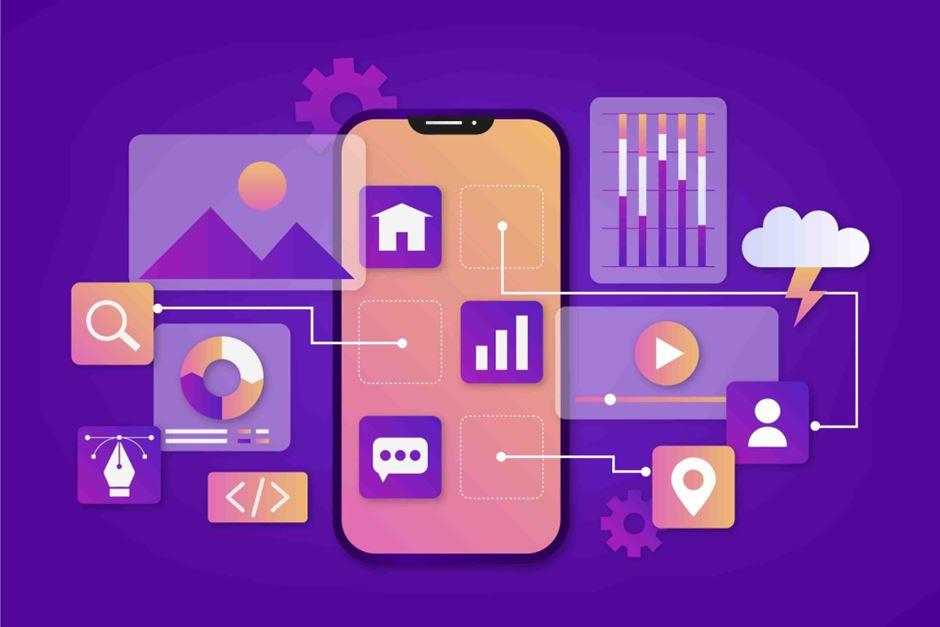Ever tried designing a website or app based solely on intuition? Sometimes it works, but let’s face it, it’s often hit or miss. You’re left hoping users will love it too, but sometimes, they just don’t.
Wouldn’t it be amazing to have a foolproof way to ensure you’re heading in the right direction? Enter data-driven design. It’s like having a secret roadmap fueled by real, solid facts to guide your design choices. But before we explore all its benefits, let’s answer one question: What exactly is this approach?
What is Data-Driven Design?
Suppose you’re building a website or an app. You want it to be user-friendly, right? But how do you know what features to include or how to arrange them? That’s where data-driven design comes in.
It lets you see exactly what your users are doing and why. It’s all about using data to make decisions about how to design and improve digital products.
- Types of Data
Quantitative Data: What, When, and How
Quantitative data tells you what, when, and how things happen. It’s the hard numbers, like how many people visit your site, what pages they look at, and how long they stay. This data helps you understand user behaviour and identify patterns.

Qualitative Data: Why
Qualitative data gives you the “why” behind the numbers. It’s all about understanding the motivations and preferences of your users. This could come from surveys, interviews, or user testing sessions. Qualitative data helps you get inside the minds of your users and understand their needs and pain points.
When you combine quantitative and qualitative data, you get a comprehensive view of your users and how they interact with your product. This allows you to make informed decisions about design changes and improvements.
Now, why does all this matter? Why should data-driven design be at the forefront of your strategy when crafting digital experiences? Let’s dive into Why Data-Driven Design Matter’s in UI UX.
Why Does Data-Driven Design Matter’s in UI UX?
In UI/UX design, mastering data-driven design emerges as a guide, illuminating the path to truly impactful digital experiences. But why does it matter so much? Let’s break it down into bits.
1) User-Centric Decision Making
Firstly, it’s all about user-centric decision making. By harnessing data, designers can gain valuable insights into user behaviors, preferences, and pain points. This allows them to tailor the design to meet the needs and expectations of the users, ultimately leading to a more satisfying and intuitive user experience.
2)Improved User Experience
Data-driven design leads to improved user experience to increase website performance. When designers have access to data about how users interact with a product or website, they can identify areas for improvement and implement changes that enhance usability and functionality. This results in a smoother and more enjoyable experience for the end user.

3)Increased Engagement and Retention
Data-driven design also drives increased engagement and retention. By analyzing user data, designers can identify patterns and trends that indicate what keeps users coming back for more. Armed with this knowledge, they can optimize the design to encourage deeper engagement and build loyalty among users.
4)Enhanced Conversion Rates
Data-driven design enables designers to identify bottlenecks and friction points in the user journey that may be hindering conversions. By making targeted optimizations based on data insights, designers can streamline the conversion process and drive more users towards desired actions.
5) Business Impact and ROI
data-driven design delivers tangible business impact and ROI. By creating a user experience that is aligned with user needs and preferences, companies can see measurable results in terms of increased customer satisfaction, higher retention rates, and ultimately, improved bottom-line performance.
So, in a nutshell, data-driven design is not just a nice-to-have—it’s a must-have for any UI UX designer looking to create impactful and successful digital experiences. As we move further into this topic, let’s explore what are the ways we can use use data-driven designs to inform UI/UX decisions.
8 Ways to use Data-Driven Designs to Inform UI/UX Decisions
UI/UX design without data is like starting a journey without a map – you might reach your destination eventually, but it’s risky and time-consuming. That’s where data-driven design comes in, acting as your guide to make decisions confidently and efficiently.
Let’s explore eight straightforward ways to use data-driven designs for better UI/UX decisions, ensuring you stay on the right path from start to finish.
1) User Behaviour Analysis
Understanding how users interact with your site or app is the cornerstone of data-driven design. By analyzing user actions, such as which features they use most and where they spend the most time, you can tailor the experience to match their natural behaviour.
2)A/B Testing
Imagine you’re choosing between two paths, but you’re not sure which one will get you to your destination faster. A/B testing in data-driven web design lets you test two versions of a page to see which one performs better. It’s a direct way to measure the effectiveness of design changes, ensuring decisions are backed by real user data.
3) Heatmaps and Click Tracking
Heatmaps and click tracking are the detective tools of UX design, revealing the hotspots where users click the most and the areas they ignore. This visual representation of data helps pinpoint exactly where to place key elements on your page, optimizing the layout for maximum engagement. It’s UX design best practices meets data analytics.
4) User Surveys and Feedback
Sometimes, the best way to understand what users want is simply to ask them. User surveys and feedback provide qualitative data that can highlight issues and desires that might not be apparent through analytics alone. Incorporating this feedback loop ensures your decisions are empathetically aligned with user needs.

5) Persona Research
Creating user personas isn’t just an exercise in creativity; it’s a data-driven strategy within data-driven web design to model your ideal users based on real data. Persona research helps you understand diverse user needs and preferences, guiding design decisions that cater to your target audience effectively. It’s where UX design best practices and data-driven insights intersect.
6)Conversion Funnel Analysis
Understanding how users move through your site—from arrival to conversion—is crucial. Conversion funnel analysis identifies where users drop off and what barriers they encounter. By analyzing these pathways, data-driven design can smooth out the journey, increasing the likelihood of conversion at every step.
7)Predictive Modeling
Leveraging data for predictive modeling allows you to anticipate user actions and design for the future. By understanding trends and user behaviors, you can predict what users might need next, creating a UX that’s not just responsive but also proactive. It’s like using a crystal ball, but with data analytics guiding your design thinking.
8) Iterative Design Process
Finally, the iterative design process embodies the essence of data-driven web design. It’s about making informed changes, measuring the results, and then refining further. This cycle of continuous improvement, fueled by data at every step, ensures your design evolves in lockstep with user needs and preferences.
Incorporating these strategies into your design process isn’t just about adhering to UX design best practices; it’s about elevating your work to a level where every element is informed by solid data. It marries the art of design with the science of data analytics, ensuring that your UI/UX decisions aren’t just good—they’re optimal.
However, data-driven design also comes with its set of challenges and limitations. let’s look into the this challanges and limitations
Challenges and Limitations of data-driven design
Data-driven design it offers vast potential for discovery, but not without facing its share of challenges and limitations. Here are the top five hurdles to consider:
- Over-Reliance on Data: Relying too heavily on data can stifle creativity, as design decisions become solely based on past user behaviors, potentially overlooking innovative or out-of-the-box solutions that data cannot predict.
- Analysis Paralysis: The sheer volume of available data can lead to decision-making gridlock, where designers find themselves unable to move forward for fear of making the wrong choice based on data analysis.
- Misinterpreting Data: Data is open to interpretation, and without the correct context, it’s easy to draw inaccurate conclusions that lead to misguided design choices, negatively impacting the user experience.
- Privacy and Ethical Considerations: Collecting and using data raises significant privacy and ethical concerns, requiring careful navigation to maintain user trust and comply with data protection laws and regulations.
- Quality and Relevance of Data: Not all data is useful; poor-quality or irrelevant data can mislead the design process, resulting in solutions that don’t truly meet user needs or address their pain points.
Conclusion
In conclusion, data-driven design emerges as the in guiding UI/UX decisions, blending design with data analytics. Through data-driven web design, designers gain a profound understanding of user behavior, steering decisions with empirical insights rather than intuition alone.
By integrating UX design best practices with data analytics, design thinking transcends mere creativity, becoming a strategic force shaping digital experiences. Through iterative refinement and predictive modeling, data-driven design propels UI/UX towards optimal solutions, ensuring every element aligns with user needs and preferences.
FAQs
What are the examples of data-driven decision-making?
Examples of data-driven decision-making include using website analytics to optimize page layouts for increased user engagement, conducting A/B tests to determine the most effective call-to-action buttons, and analyzing customer feedback to improve product features.
What are design decisions in UX design mostly driven by?
Design decisions in UX design are mostly driven by user needs, behaviors, and feedback, alongside usability testing and data analytics to ensure a user-friendly and effective experience.
What is the golden rule of UX design?
The golden rule of UX design is to always put the user first, ensuring the design is intuitive, accessible, and solves the user’s needs efficiently.
Chris Mcdonald has been the lead news writer at complete connection. His passion for helping people in all aspects of online marketing flows through in the expert industry coverage he provides. Chris is also an author of tech blog Area19delegate. He likes spending his time with family, studying martial arts and plucking fat bass guitar strings.